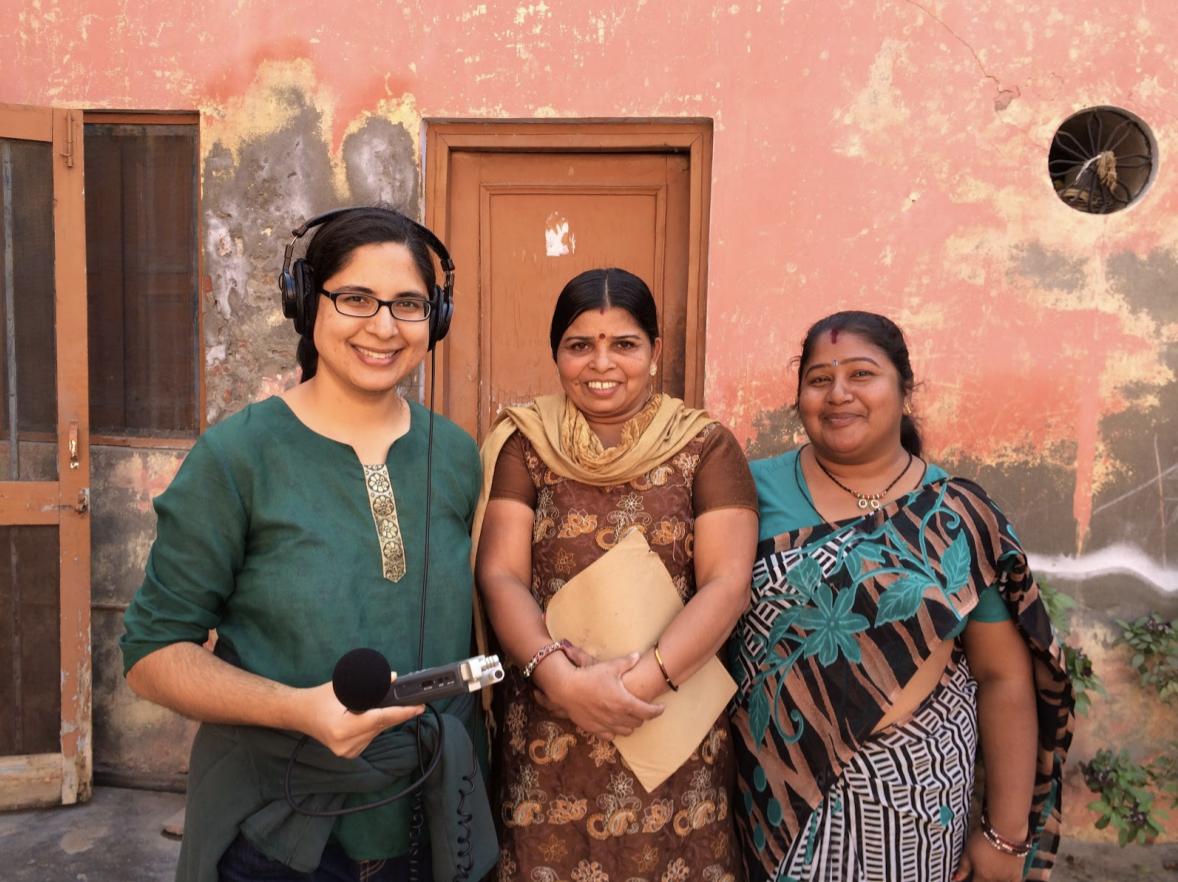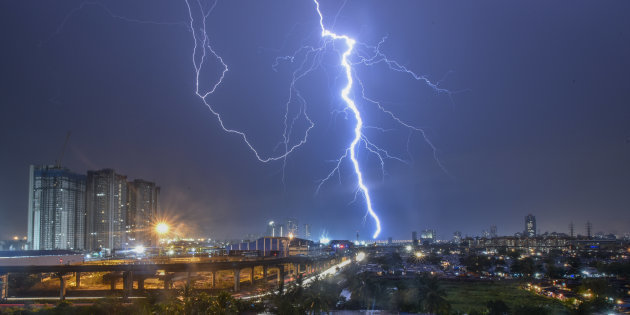India Reporting Project | UC Berkeley Graduate School of Journalism

Sonia Narang (left) with her interview subjects from Kerala, photographed in Haryana, India

Duane Moles (left) and Adithya Sambamurthy (right) filming in Amritsar, Punjab
About the Project
From New Delhi to Mumbai, down to Kerala, over to Bihar and even venturing into Kashmir, students from the University of California, Berkeley Graduate School of Journalism have crisscrossed India in pursuit of stories.
In an effort to better train young journalists to cover a complex country like India, the Graduate School of Journalism and the Chatterjee Charitable Foundation came together to establish the India Reporting Project, which was launched in 2003 with a small group of UC Berkeley journalism graduate students.
Since then, India’s middle class has grown rapidly, and Bangalore now has more IT professionals than Silicon Valley. India’s highly educated workforce is entering the global market, and the country is quickly becoming a major economic power. But it is also true that a majority of Indians still depend on agriculture to make a living, lack access to safe drinking water and cannot access basic health care. More people in India subscribe to a cell phone service than have access to a proper toilet, an oft quoted fact that illustrates the tension between a country moving forward and those being left behind.
The rapidly changing tide in India demands journalists who understand and are familiar with the diverse country. It was to this end that the Graduate School of Journalism launched the India Reporting Project and the Nirupama Chatterjee Teaching Fellowship.
The school offers the fellowship annually to an Indian editor or reporter, who will come to Berkeley for a semester and teach a course preparing our journalism graduate students for a hands-on reporting trip to India. Over the past decade, the school has invited renowned journalists from India to guide our students through a course focused on reading and reporting about India, culminating in a reporting trip at the end of the semester.
The fellowship is named in honor of Nirupama Chatterjee, who lived through India’s independence in 1947 and the opening of India’s economy in the early 1990s. Despite her reverence for tradition, Mrs. Chatterjee was very much a modern, forward-looking woman. She insisted that her three daughters have as much access to education as her three sons, and when several of her children immigrated to the United States, she was able to bridge the two cultures. Until her death in 1998, she remained open to a new world and excited by its possibilities. This fellowship honors her spirit.

"This project had a huge impact on my
career. The class gave me an amazing background
in Indian history that put current events in context
just at a moment when India's business story
was booming."
Jessi Hempel
Senior Editor at Large at LinkedIn, writing weekly column and hosting podcast and video series (formerly with WIRED and Fortune magazine)
Publication Partners








Nirupama Chatterjee Project Fellows
The fellowship is named in honor of Nirupama Chatterjee, who lived through India’s independence in 1947 and the opening of India’s economy in the early 1990s. Despite her reverence for tradition, Mrs. Chatterjee was very much a modern, forward-looking woman. She insisted that her three daughters have as much access to education as her three sons, and when several of her children immigrated to the United States, she was able to bridge the two cultures. Until her death in 1998, she remained open to a new world and excited by its possibilities. This fellowship honors her enduring spirit.
Geeta Anand
Anand is dean of the UC Berkeley Graduate School of Journalism and formerly a reporter in India for The New York Times and Wall Street Journal.

Raj Kamal Jha
Jha is chief editor of the Indian Express newspaper, part of the consortium that won a Pulitzer Prize for the Panama Papers reporting. He was formerly an editor at The Statesman and India Today and has published four novels.

P. Sainath
Sainath is the former rural affairs editor for The Hindu who has written extensively on farmer suicides, agriculture, hunger and poverty. He’s the author of “Everybody Loves a Good Drought.”

Siddharth Varadarajan
Varadarajan is founding editor of The Wire, formerly editor of The Hindu.

Samar Halarnkar
Halarnkar is editor of IndiaSpend and author of two books. He’s worked at The Times of India, Indian Express and Hindustan Times.

Kalpana Sharma
Sharma is an independent journalist, author and readers’ editor at Scroll.in. She’s the former deputy editor of The Hindu.

Olga Tellis
Tellis was formerly an editor at Asian Age.


Parvathi Menon
Menon was formerly Bangalore bureau chief for The Hindu.

Nupur Basu
For the last three decades Basu has worked in both print and television journalism and reported and filmed extensively from different regions in the world like India, UK, Uganda, Switzerland, South Africa, Spain, Pakistan, Sri Lanka, Nepal and Bangladesh.
Featured Stories from 2018

How a Team of Incredible Ladakhi Women Hockey Players Broke India's Ice Ceiling
By Sam Goldman
Using borrowed equipment on frozen ponds, a crew of former figure skaters are chasing their dream of winning an international ice hockey tournament.

Hyderabad Rising
(Video)
By Emma Schwartz and Mallory Newman
A short documentary about a network of government-funded boarding schools that are empowering girls in the lowest castes. The Telangana Social Welfare Schools are attempting to break a thousand-year-old cycle of caste, gender and class oppression, but their path has been riddled with challenges and opposition.

Jobs Crisis: India’s Teachers are Renting Out their Government Jobs
By Caleb Hampton
In Nagaland and many other Indian states, proxy teachers with questionable qualifications are creating a generation of children who are being educated only in name.
In the Field Snapshots

More Stories from 2018
Chulha Trap
Produced and Edited by J.P. Dobrin
The smoke from indoor cooking is now the largest source of air pollution in India, which has the worst air quality in the world. Prime Minister Narendra Modi said he had a solution. Free gas canisters. But this film reveals that the reality isn’t as promised. Local gas distributors confirm what young mothers say on camera—that there is no free gas. The reality is the government is loaning families a stove and a first gas cylinder, after which they need to pay for the refills that are still too expensive for the vast majority of Indians. Most go back to burning wood after using up that first gas cylinder.
Fighting Haryana's Patriarchy, This Bodybuilder Wants to Make History for India
By Salina Nasir & Video Marian Carrasquero
In Gurugram, where Yashmeen Chauhan lives and works out, a muscular woman is a rare sight.

Mumbai Will Have a First Of its Kind Task Force to Help People Battle the Monsoons
By Muna Danish
"Rain days are compressing and becoming more intense. No system can cope with this.”
Mumbai formed its first disaster response force in 2018, a year after flooding in South Asia killed more than 1,200 people. Two hundred of the city’s security guards trained in search and rescue and first aid.
Living Together and Learning to Code
By Khaled Sayed
To help tackle India's persistently high unemployment, a graduate of India's top engineering school set up a training program to teach computer coding to poor teenagers. They live and work together, developing coding and leadership skills.
What former students are saying about the experience

Shani Moore Weatherby
Head of Cinema & Marketing, Legal Affairs, Dolby
My training in India changed my life, and helps me impact the lives of others. Because of my experience in Chandigarh and New Delhi, I am able to develop and promote greater communication and mutual understanding with Indian and other international colleagues. Traveling to and learning within India was invaluable in expanding my perspective, developing my understanding of and interest in the country, and improving my ability to navigate global work. The opportunity proved that there is more that unites than divides us, and continues to ripple beyond my personal experience.

Emma Cott
Senior Video Journalist, The New York Times
I was very lucky to travel to Hyderabad, Bangalore and Mumbai for a story about the dowry system. My story focused on a marriage website for people who were bucking the norm by refusing to give or take dowry. The dowry issue, while familiar to all Indians, is very little understood by Americans, and it was extremely eye opening for me to get to meet face to face with anti-dowry activists and dowry victims, while studying the legal history that holds this age-old custom illegal. It was only once I was in India that I really understood how pervasive the dowry system and the related abuse was, despite the official line that it had been abolished. More generally, it was a daunting task to study a whole country, have to pick one story, and then parachute in as a total outsider. In the India reporting class I learned the importance of working with a good fixer, and to trust my instincts as a reporter, even when in a foreign place. I use these skills daily in my current job as Senior Video Journalist in international video at The New York Times, where I work in a team to produce and report video news from around the world.

Adithya Sambamurthy
Freelance producer, shooter for The Guardian, BBC, the Economist Film Unit (formerly staff video journalist at The Guardian)
I grew up visiting my family in India pretty frequently, but I had never worked in the country as a journalist until I took the India reporting class at the Graduate School of Journalism. My project took me to Amritsar, to film at a school for Anglo American Sikhs, students whose parents had converted to Sikhism in America in the late 1960s and who chose to send them to boarding school there. The resulting documentary became my thesis project, and it helped me get my first job after journalism school, on a documentary for National Geographic television. I’ve since returned to India a number of times to work on news and documentary projects, and I credit the class not only with helping me report my thesis and setting me up for my first job after graduation, but with introducing me to a network of veteran Indian journalists like Siddarth Varadarajan, with whom I’ve stayed in touch over the years.




